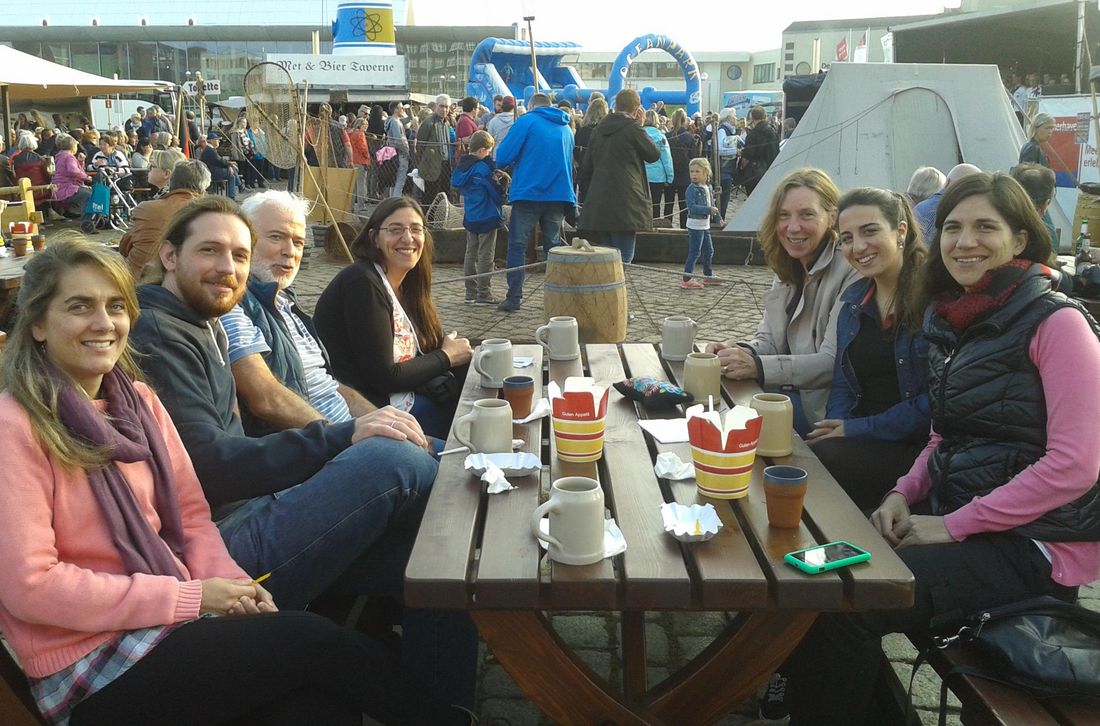Dolores Deregibus spent a final period of four months at the AWI with the Bremerhaven Macroalgae group to finalize papers and think about future work
From May to September this year I stayed in Bremerhaven, working at the AWI with colleagues and friends. We know each other since many years which make our collaborations easier and more productive over time. We have accomplished several publications together and planned for more international and interdisciplinary research activities in Antarctica.
During my stay I participated in the Final IMCONet Workshop- 23 to 26 May 2016. This kind of stays and meetings creates the atmosphere to work directly and in round tables. It brings the researchers the opportunity to improve the analysis, discussions and understanding of the data and the information we compile and share. Thus, in this way we aim to perform the work more efficiently with a better quality of the final publications.
During my stay at the AWI I focused in the analysis and writing of paper publications, and my Phd Thesis entitled “Depth distribution of Antarctic macroalgae under a climate change scenario” directed by Dr. Quartino (IAA) and supervised by Katharina Zacher and Christian Wiencke from the AWI macroalgae group.
The research is focused in ecological and ecophysiological studies of the effects of climate change in macroalgal communities in newly ice free areas in Potter Cove, Antarctica in collaboration with the AWI and the British Antarctic Survey (BAS). We are in particular analyzing (1) the vertical distribution of ecologically important species and the carbon balance in areas with different degree of glacial influence, (2) the ice scouring effects in benthic communities, and (3) primary production, in Potter Cove.
Furthermore, we planned and prepared the field expedition 2016-2017 to Carlini Station to continue with:
-the monitoring of ice scouring experiments in two newly ice -free areas with different degree of glacial influence
- PAR (photosynthetically active radiation) long term and continuous measurements in five newly ice-free areas. The data from the underwater PAR measurements will be used together with photosynthetic data obtained in previous years from the most relevant macroalgae to calculate primary production in the Potter Cove



